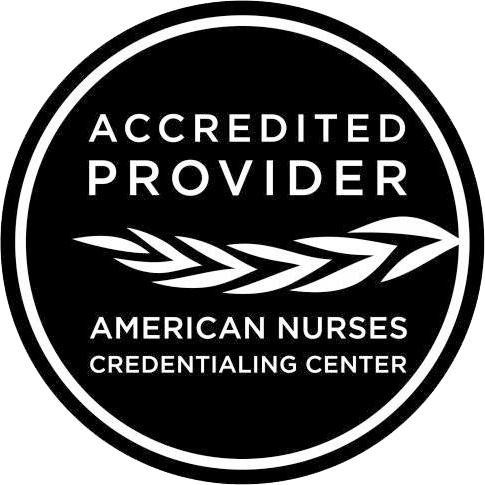
Cannabidiol: What You Should Know in the New Wild West of Herbal Cannabis Therapy
- Registration Closed
The 2018 Agricultural Improvement Act (Farm Bill 2018) authorized by Congress made hemp products containing less than 0.3% tetrahydrocannabinol (THC) legal. However, contrary to popular belief, this bill did not authorize the legal sale of cannabidiol (CBD) products for promotion of any traditional health benefits, yet the sale of CBD products across the United States has significantly increased following its passage. There is currently no formal regulation on CBD products being sold in the United States beyond Epidiolex® which is specifically regulated as a drug via the FDA. Pharmacists need to understand the basics of how CBD acts on the human body, which health claims have been proven via robust clinical trials, and the potential adverse effects and drug interactions that may occur in a patient who uses these unregulated products in conjunction with their prescribed or over-the-counter medication regimen. Pharmacists also need to be able to provide information regarding the sale and regulation of CBD products and the potential issues that may arise given the current legal status of CBD products.
*Due to rapidly changing clinical knowledge, once purchased, you have 90 days access to complete this education.
Credits: 1.50 contact hours; 1.50 are pharmacology
Expiration Date: December 31, 2024
$40.00
LEARNING OBJECTIVES
After taking part in this educational activity, participants should be better able to:
-Identify the mechanism of action of CBD and its potential medicinal benefits based on available published data
-Identify potential adverse reactions and drug-drug interactions resulting from the use of CBD products
-Provide counseling to patients with questions regarding OTC CBD products

Evan Horton, PharmD, BCPPS
Faculty
MCPHS University
I graduated with my doctorate of pharmacy from the Bernard J. Dunn School of Pharmacy at Shenandoah University in 2005. I completed an ASHP-accredited pharmacy practice residency at the University of New Mexico Health Sciences Center in 2006. Upon completion of my residency, I accepted a faculty position at MCPHS University in Worcester, MA, creating an internal medicine clerkship site at Baystate Children’s Hospital in Springfield, MA. I became board certified in pediatric pharmacotherapy in 2017 (BCPPS). I am an active member of the Pediatric Pharmacy Association (PPA), serving on the Advocacy Committee as well as the academic special interest group. My areas of teaching focus are pediatric pharmacotherapy, pain management, substance use disorder, and the pharmacotherapy revolving around medical cannabis therapy.
CE INFORMATION
Obtain Your Credits
To earn credits for this activity, navigate to the Content(s) tab and complete all course components in the following order: 1) watch the course presentation; 2) complete the course evaluation; 3) pass the post-test with a score of 2/3 (66.7%) or higher. You may retake the post-test until a passing score is achieved, at which point you will be able to view/print a copy of your certificate of completion. This online certificate will also be saved within your profile “My Courses/Certificates” --> "Transcripts/Certificates Earned" for future access.
Designation Statement
NPACE designates this educational activity for a maximum of 1.50 contact hours, of which 1.50 is pharmacology credit. Participants should claim only credit commensurate with the extent of their participation in the activity.
Accreditation Statement
Nurse Practitioner Associates for Continuing Education is accredited as a provider of nursing continuing professional development by the American Nurses Credentialing Center’s Commission on Accreditation.
In addition to ANCC, NPACE is approved as a provider of continuing education in nursing by: the California Board of Registered Nursing, Provider Number CEP8720 and Florida CE Broker #50-1476.
DISCLOSURES
Faculty
Contributing faculty, Evan Horton, PharmD, BCPPS have disclosed no relevant financial relationships.
Planners
All planners and contributors involved in this educational activity have disclosed no relevant financial relationships.
Disclaimer
The material presented in this continuing education program is being made available for educational purposes only and is not intended to represent the best or only methods, medications and/or guidelines appropriate for the medical situation discussed. Rather the material is intended to present an approach, view, statement, or opinion of the presenter(s), which may be helpful, or of interest to other practitioners and should not be used by clinicians without the evaluation of their patient’s conditions and possible contraindications on dangers in use, review of any applicable manufacturer’s product information, and comparison with recommendations of other authorities. NPACE disclaims any liability, loss, injury, or damage incurred as a consequence, directly or indirectly, of the use and application of any information given in a presentation.
Disclosure of Unlabeled Use
This educational activity may mention the uses of products that are not approved by the FDA for the indication(s) being discussed. The presenter(s) are instructed to notify participants when they are discussing unapproved uses or investigational agents. The opinions related to unapproved uses of products are solely those of the presenter(s) and are not endorsed or recommended by NPACE. Please refer to the official prescribing information for each product for discussion of approved indications, contraindications, and warnings.
Commercial Support
There is no commercial support for this activity.


